The Stevens Center: A ‘Center’ of Arts Since 1929
A hotel, a movie theater, a concert venue, a classroom, a restaurant, an ice rink – the Stevens Center in downtown Winston-Salem has been all of these things.
At the corner of West Fourth Street and North Marshall Street in the heart of the city, what is now known as the Stevens Center was originally built in 1929 as the Carolina Theater and Hotel – a silent movie venue and lodging space designed in an ornate neoclassical style.
Up until the mid-1960s, the Carolina Theater was teeming with people at all hours of the day, due to its central location and its luxurious design. The theater itself had more than 2,000 seats, with two levels of balconies and a grand staircase in the lobby.
“With a dollar, you could ride the bus to the Carolina [Theater], see a movie, buy popcorn, and take the bus home with 10 cents still left in your pocket,” said Barbara Marson, a Winston-Salem native who frequented the theater in the 1960s. “It was the best place in town to see a film.”
The theater also hosted other events, including a Saturday morning “Kiddie Show” with live performances by local bands, dancing and a reduced-price movie showing.
The invention of multiplexes and the national move to the suburbs in the mid-1960s took its toll on the Carolina Theater and Hotel, and the building slowly decayed as business shrank.
Glenn Simmons, 63, principal planner with the City-County Panning Board, took notice of this decline in the late 1960s, when he saw the theater with the lights on. “The walls were grimy and the floors were sticky and filthy,” he said. “The place looked like it hadn’t been cleaned in years.”
By 1973, the theater and hotel had shut down, and there were talks to turn the entire building into a parking lot.
A coordinated effort by the University of North Carolina School of the Arts, federal corporations, private donors, city officials and three federal agencies, however, resulted in plans to renovate the rundown venue into a state-of-the-art performance facility.
Ten years and $9.6 million later, the Carolina Theater and Hotel was reopened as the Stevens Center, named in honor of the famed Broadway producer and arts advocate, Roger L. Stevens.
While aspects of the building are preserved, including the original plasterwork, a Tiffany light fixture and the dark green and gold color scheme, the structure underwent many changes to accommodate the needs of the School of the Arts.
Among these changes was the removal of the second balcony, the construction of underground rooms, the expansion of the lobby area and the conversion of the hotel into an office space.
Today, the center has been an asset in the downtown revitalization movement spearheaded by the Winston-Salem Arts Council according to Simmons, acting as a professional performance space for various organizations including the Winston-Salem Symphony, the Piedmont Opera and student productions from the School of the Arts.
The structure has had some claim to fame, featured in movies such as “The Bedroom Window” (1987) and “Mr. Destiny” (1990). The center has seen its fair share of luminaries as well. The April 1983 opening gala for the new venue was emceed by Gregory Peck, and was attended by celebrities such as Agnes de Mille, Jean Stapleton, Leonard Bernstein, Lady Bird Johnson and Gerald Ford.
The building is now truly a multi-purpose facility. According to Scott Spencer, the Executive Director for the Stevens Center, the venue is used for more than just concerts and plays. There have been movie showings, ice rinks, and car raffles held in the building.
“We haven’t done professional wrestling, and we haven’t done a truck pull on stage,” said Spencer, who has worked at the Center since 1988. “But we’ve done just about everything else.”
- Policeman under Marquee of Carolina Theater. Courtesy of Scott Spencer.
- The Morris Service Restaurant in 1964. Courtesy of Scott Spencer.
- The Carolina Theatre at night. Courtesy of Scott Spencer.
- Carolina Theater Marquee displaying Crosby & Hope’s “Road to Rio.” Courtesy of Scott Spencer.
- The original Carolina Theater ticket booth. Courtesy of Scott Spencer.
- A street view of the Carolina Theater and Hotel. Courtesy of Scott Spencer.
- Color image of the Carolina Theater circa 1966. Courtesy of Scott Spencer.
- An aerial shot of the Carolina Theater and Hotel circa 1954. Courtesy of Scott Spencer.
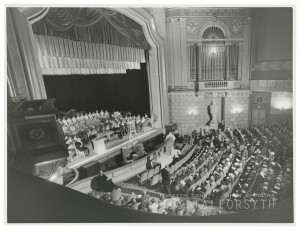
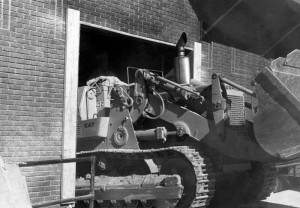
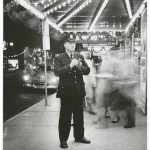
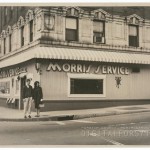
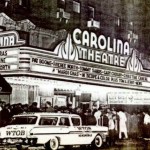

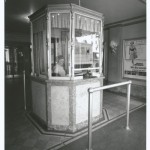
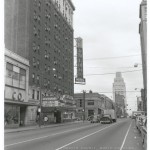

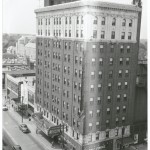
Comments
also – the balcony was for “negroes” only. I remember looking up from below and wondering about that, as my family was new to the South and its segregation (I am white)
Comment by Alix Hitchocck on October 12, 2014 at 3:05 pm
Next door to the Carolina Theater was the Forsyth Theater. I paid about a quarter to see “Gone With the Wind” there.
Comment by Jimmie Vestal on July 31, 2019 at 10:03 pm